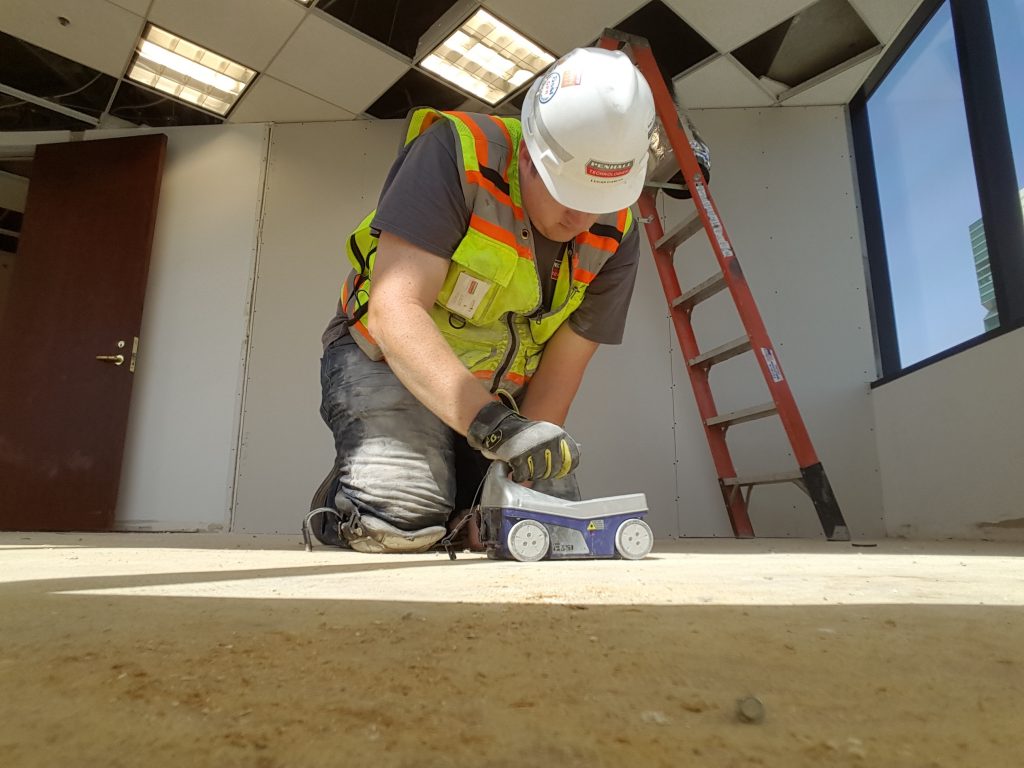Past the Surface: Leveraging Advanced Concrete Scanning Techniques for Unmatched Precision and Insight
Advanced concrete scanning methods have actually emerged as important devices in this pursuit, providing a glance beneath the surface to introduce a world of important understandings. By harnessing innovative modern technologies, experts can reveal anomalies, analyze the problem of concrete structures, and make informed decisions that shape the program of jobs.
Relevance of Advanced Concrete Scanning
The significance of using sophisticated concrete scanning strategies exists in the unrivaled precision they use for detecting sub-surface abnormalities and ensuring structural integrity. By utilizing advanced innovations such as ground-penetrating radar (GPR), electro-magnetic induction, and progressed finder imaging, building and construction specialists can dive beneath the surface area of concrete structures with a level of accuracy that far exceeds conventional evaluation techniques. Concrete Scanning. These methods allow the identification of covert risks like rebar rust, voids, conduits, or post-tension cables that could compromise the security and safety of a structure over time
Moreover, progressed concrete scanning gives very useful understandings right into the general condition of a concrete element without the need for intrusive procedures, decreasing the danger of triggering damage during the analysis procedure. The capacity to determine the specific area and deepness of prospective concerns allows for targeted fixings and maintenance, ultimately extending the life-span of the structure and maximizing its efficiency. Fundamentally, the value of advanced concrete scanning can not be overstated in the world of building and infrastructure maintenance, where precision and reliability are critical.
Sorts Of Cutting-Edge Technologies

Anomalies and Defect Detection

In enhancement to GPR, concrete scanning strategies like click to read more thermography and impact-echo screening are additionally reliable in spotting flaws and abnormalities. Thermography makes use of infrared innovation to determine variants in surface temperature, suggesting prospective areas of concern such as delamination or moisture ingress. On the other hand, impact-echo screening involves analyzing acoustic responses to detect voids, splits, and various other issues within the concrete. By leveraging these innovative strategies, specialists can proactively resolve architectural problems, making sure the durability and security of concrete structures.
Assessing Concrete Condition
Just how can designers precisely examine the problem of concrete structures to ensure their longevity and security? Various sophisticated concrete scanning methods are employed for this purpose. Ground-penetrating radar (GPR) is commonly used to evaluate the internal structure of concrete, detecting spaces, splits, and various other abnormalities that might jeopardize its stamina.
In addition, aesthetic examination remains an essential component of concrete problem analysis. Designers aesthetically analyze the surface for signs of degeneration, such as spalling, fracturing, or staining. Incorporating non-destructive screening methods with visual inspections permits a detailed examination of concrete condition, allowing designers to determine prospective problems at an early stage and carry out timely maintenance or repair work. By leveraging these sophisticated techniques, engineers can ensure the long-term resilience and security of concrete structures.
Enhancing Decision-Making Procedures
In the realm of facilities administration, enhancing decision-making processes is critical for making certain the effective upkeep and long life of concrete frameworks. Improved decision-making processes in concrete management involve making use of sophisticated scanning techniques to gather detailed information on the condition of frameworks. By leveraging modern technologies such as ground-penetrating radar and 3D imaging, stakeholders can make educated decisions concerning repair, support, or replacement methods.
These progressed scanning methods offer important understandings look at this web-site right into the inner structure of concrete, identifying potential problems such as gaps, cracks, or rust that might not be visible on the surface area. This degree of comprehensive info enables proactive maintenance preparation, decreasing the risk of structural failures and boosting the total lifespan of concrete structures.
Additionally, by including electronic documentation and analysis devices right into the decision-making process, stakeholders can track the evolution of concrete conditions over time, allowing predictive maintenance techniques and enhancing resource allotment. Eventually, the combination of advanced concrete scanning techniques enhances decision-making processes by providing unmatched precision, understanding, and effectiveness in facilities administration.
Final Thought
Finally, advanced concrete scanning techniques offer exceptional accuracy and insight in spotting anomalies, problems, and assessing the condition of concrete structures. By leveraging advanced go to the website technologies, decision-making procedures can be boosted, causing even more educated and reliable services for maintaining and repairing concrete infrastructure. These techniques play a critical duty in guaranteeing the security and durability of concrete structures, making them a vital device in the area of building and engineering.
In addition, advanced concrete scanning gives invaluable understandings right into the general problem of a concrete element without the requirement for invasive measures, minimizing the risk of causing damages during the assessment procedure - Concrete Scanning. One more innovative technology is 3D X-ray scanning, which gives in-depth pictures of the internal framework of concrete, using important details without the demand for harmful testing. Additionally, Concrete Cover Meters are made use of to determine the thickness of concrete cover over support bars accurately. Improved decision-making procedures in concrete administration entail using innovative scanning techniques to collect comprehensive information on the condition of structures.In verdict, advanced concrete scanning methods offer unmatched precision and insight in identifying anomalies, issues, and evaluating the condition of concrete frameworks